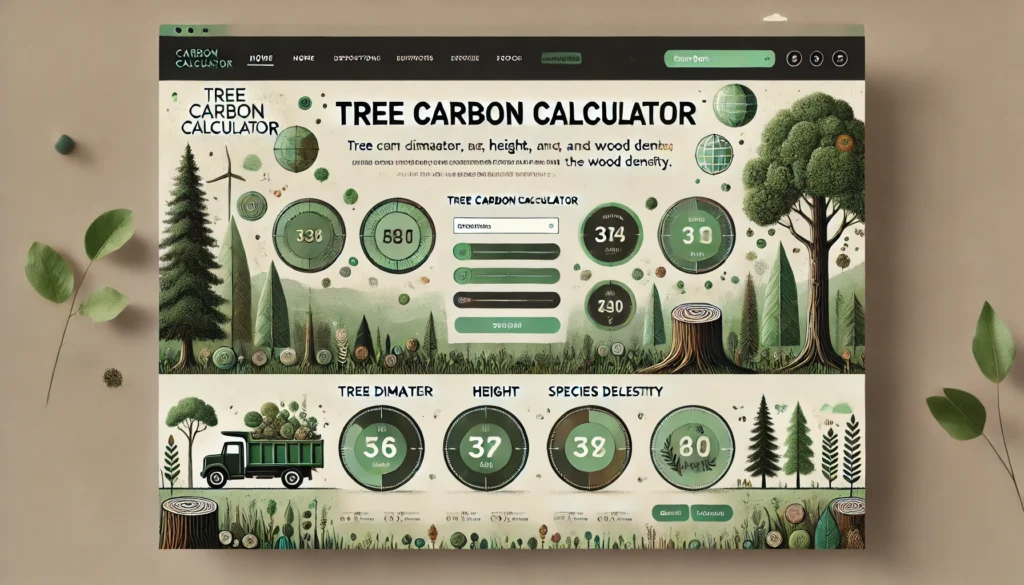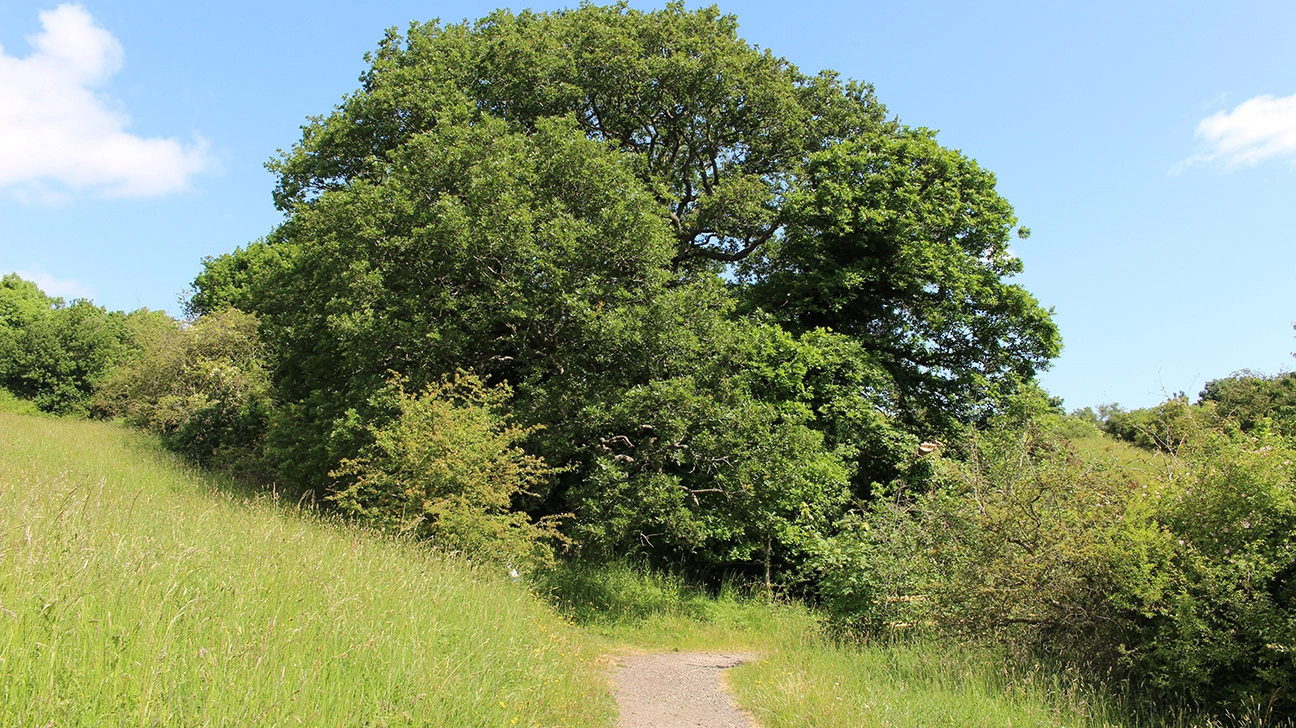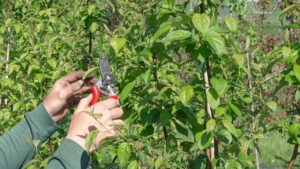The Tree Carbon Calculator helps estimate the carbon sequestration potential of trees based on their age, species, and quantity. Trees play a crucial role in reducing CO₂ levels, absorbing carbon, and contributing to a healthier environment. This tool is designed for environmental enthusiasts, landowners, and urban planners to gauge the annual carbon offset provided by different tree types, making it easier to understand the impact of planting and maintaining trees over time. By entering simple details, users receive an estimated value of CO₂ absorbed annually, supporting informed decisions on tree planting for climate resilience and sustainability.
Tree Carbon Sequestration Calculator
Tree Carbon Calculator
Estimate how much carbon dioxide (CO₂) a tree absorbs based on its species, age, and size.
| Tree Species: | |
| Tree Age (years): | |
| Trunk Diameter (inches): | |
| Tree Height (feet): | |
| Tree Health: | |
Tree Carbon Absorption Results
Based on your input, your Oak tree:
| Annual CO₂ Absorption: | 226 lbs CO₂ per year |
| Lifetime CO₂ Absorption: | 3,390 lbs CO₂ total |
| Equivalent to miles driven: | 254 miles |
| Equivalent to homes powered for 1 day: | 10 home-days |
The Tree Carbon Calculator uses a formula that estimates the amount of carbon stored in a tree based on its diameter at breast height (DBH), species, and growth conditions. The most commonly used formula to estimate the carbon sequestration of a tree is:
Carbon Storage (kg) = (π/4) × (DBH²) × (Height) × (Wood Density) × (Carbon Fraction)

Components of the Formula:
- DBH (Diameter at Breast Height): This is the diameter of the tree trunk measured at approximately 1.3 meters (4.5 feet) above ground level. It is usually measured in centimeters or inches.
- Height: The total height of the tree is measured in meters or feet.
- Wood Density: This value, measured in kg/m³, varies by tree species. It reflects the mass of wood per unit volume and is crucial in determining how much carbon is stored in the tree’s biomass.
- Carbon Fraction: This is a standard value representing the proportion of carbon in the wood. Typically, about 50% of the dry weight of wood is carbon, so the carbon fraction is often taken as 0.5.
Explanation with Example:
Let’s consider an example of a common tree species, the oak tree. Suppose we have an oak tree with the following measurements:
- DBH: 30 cm
- Height: 15 meters
- Wood Density: 700 kg/m³ (average density for oak)
- Carbon Fraction: 0.5
Step 1: Calculate the Cross-Sectional Area
First, we calculate the cross-sectional area (A) of the tree trunk using the formula for the area of a circle:
$$[
A = \frac{\pi}{4} \times (DBH)^2 = \frac{\pi}{4} \times (30 \, \text{cm})^2 = \frac{\pi}{4} \times 900 = 706.86 \, \text{cm}^2
]$$
Step 2: Convert Area to Square Meters
Convert the area from square centimeters to square meters:
$$[
A = 706.86 \, \text{cm}^2 \times 0.0001 = 0.070686 \, \text{m}^2
]$$
Step 3: Calculate Carbon Storage
Now we can plug these values into the carbon storage formula:
$$[
\text{Carbon Storage} = (0.070686 \, \text{m}^2) \times (15 \, \text{m}) \times (700 \, \text{kg/m}^3) \times (0.5)
]$$
Calculating this:
$$[
\text{Carbon Storage} = 0.070686 \times 15 \times 700 \times 0.5 = 373.76 \, \text{kg}
]$$
This means that the oak tree stores approximately 374 kg of carbon.
Conclusion:
The Tree Carbon Calculator is a powerful tool for understanding the carbon sequestration capabilities of trees. It can help in environmental assessments, inform reforestation efforts, and contribute to carbon offset initiatives. By estimating the amount of carbon stored in trees, we can better appreciate their value in mitigating climate change and promoting sustainable ecosystems.






